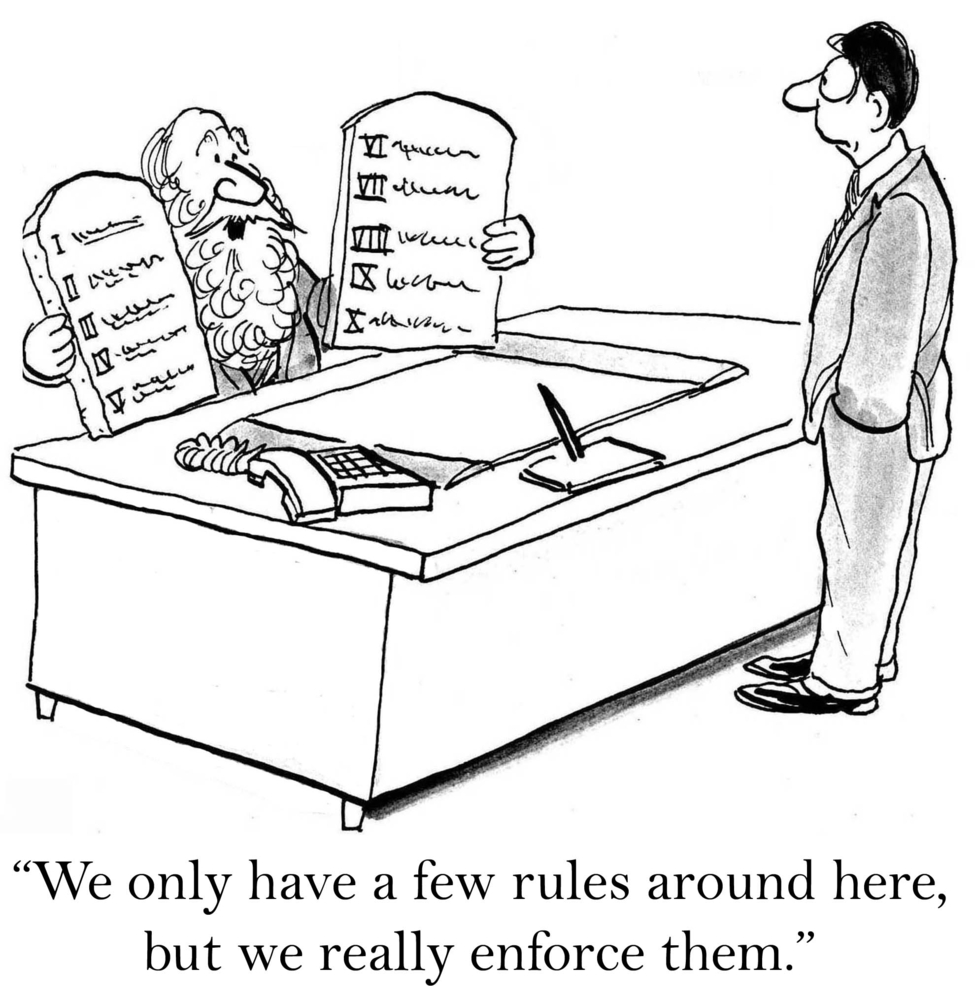Rules of Employee Engagement Matter
If you are a team leader, a major part of your leadership role is to know the rules of employee engagement and to maintain high levels of team engagement. Engagement helps keep your team dedicated, committed, and on track.
Eight Rules of Employee Engagement
Though the following “Rules of Engagement” may seem like common sense, our organizational culture assessment finds that many bosses fail to follow them — to their peril. When employees are disengaged, they are 40% less productive than their engaged counterparts. Which side of that statistic do you want your team on?
- Show You Truly Care
A fast way to destroy a relationship is to ignore or neglect the needs of your coworkers. Every employee wants to feel valued at work. It often doesn’t take much.
Send a personal note if an employee has lost a loved one or is sick; ask about the tournament you know your employee’s daughter was competing in; find out about their recent vacation.
When you are genuinely interested in your employees’ welfare on and off the job, you will earn their loyalty.
- Be Fair
When you have set clear expectations of behavior and performance, it is far easier to be fair in your treatment of team members. You need to be vigilant and even-handed. You don’t want to be perceived as favoring one employee over another, disciplining inconsistently, or unfairly administering work schedules.
- Be Respectful
Never be condescending or arrogant. From the lowest level employee to the highest, all deserve to work in a respectful environment. And don’t make unreasonable demands on employees’ personal time.
Occasionally, yes, you will all have to work late or on a weekend. But this should occur infrequently.
- Know Your Team
Meet regularly with your team — individually and as a whole. The more you get to know each other and get on the same page, the better you can support one another. Build the relationships by being present and spending time together.
- Have Their Back
Be ready to advocate for your team members — they will appreciate you for it. And, when something goes wrong, be ready to take the blame. Managers who throw a team member under the bus quickly raise suspicion that they have no loyalty and would do the same to others.
- Help Employees Grow
The best managers encourage their team members to learn and grow in their knowledge and skills. They empower them to do their jobs as much as possible on their own. This demonstrates your trust in their capabilities and your interest in seeing them succeed over the long-term.
- Reward and Recognize
Don’t forget to highlight achievement and progress. A public thank you to an employee who has put in extra effort is one way. Another is a dinner out for two for someone who worked late several nights in a row to meet a deadline. Be creative in thinking how you can recognize and reward discretionary effort.
- Follow Through
Sadly, while more than 90 percent of organizations currently run engagement surveys, 80 percent report that they do not drive meaningful business outcomes. Not following through on employee engagement results is a missed opportunity.
Not only does the survey process raise employee expectations, but employees who see meaningful action taken after an engagement survey as twelve times more likely to be engaged the following year.
The Bottom Line
Employee engagement can be achieved person-by-person and team-by-team. Make sure you follow the above rules of employee engagement to keep your team performing at its peak over the long-term.
To learn how to implement the rules of employee engagement, download The Top 10 Most Powerful Ways to Boost Employee Engagement
